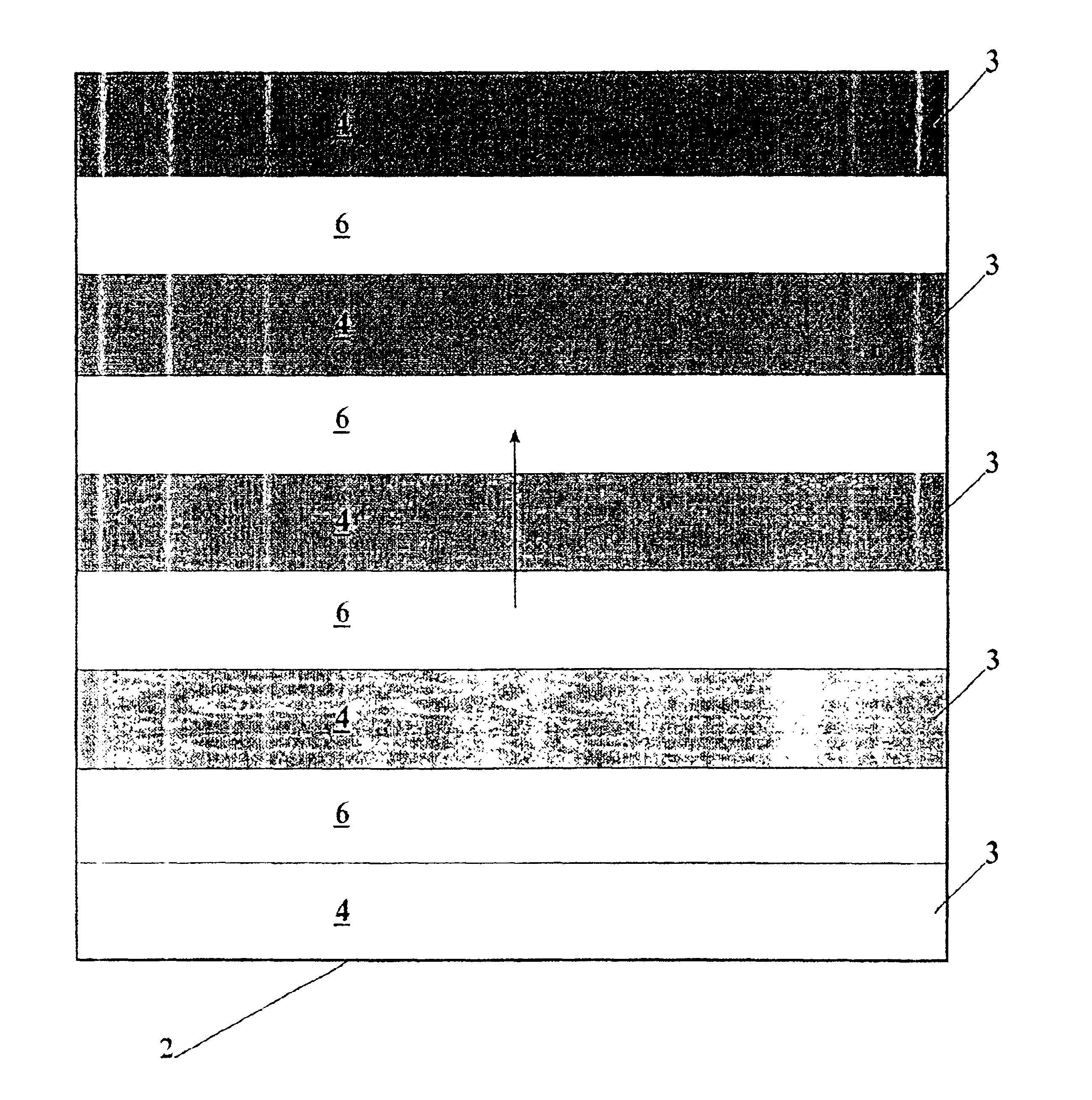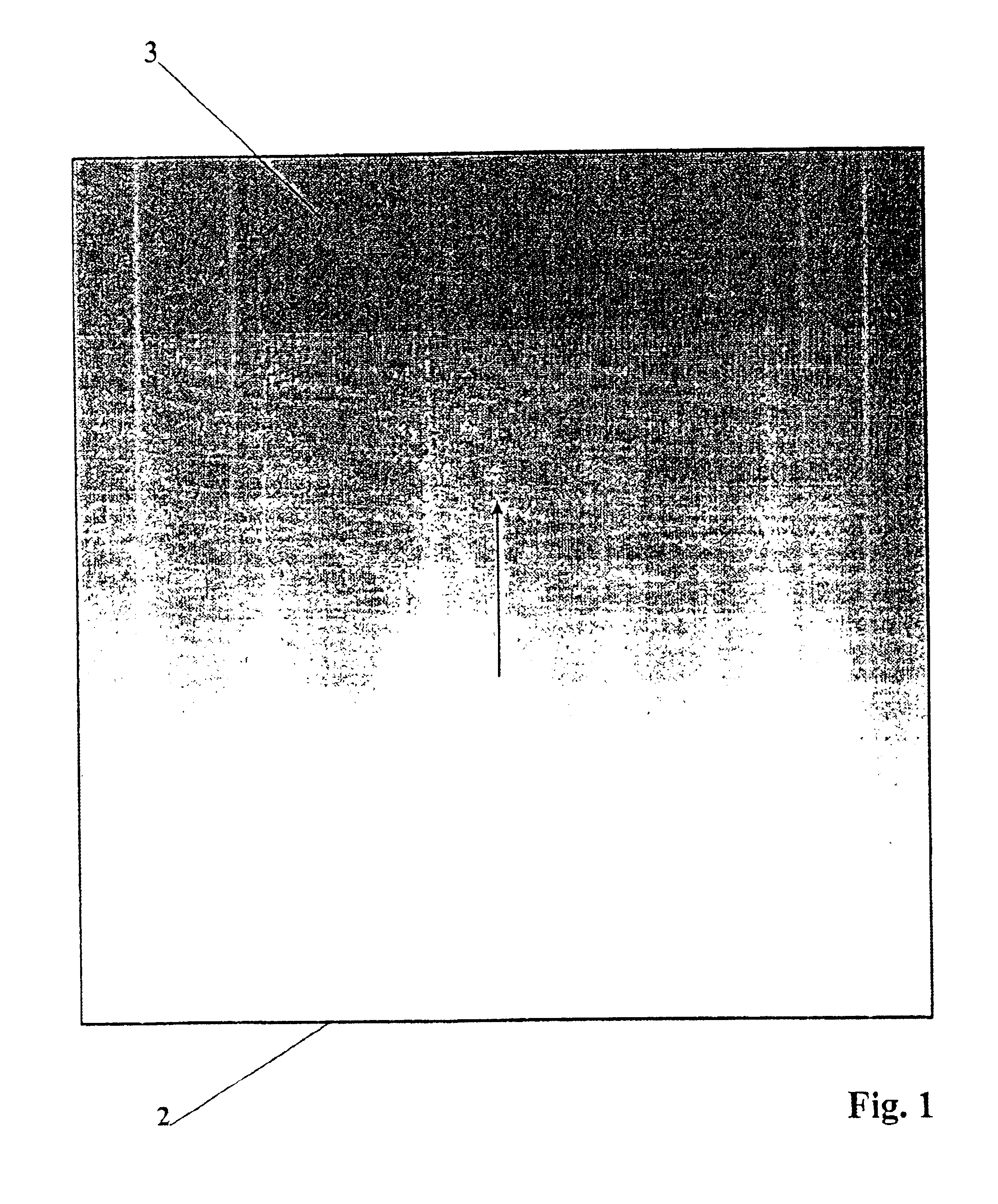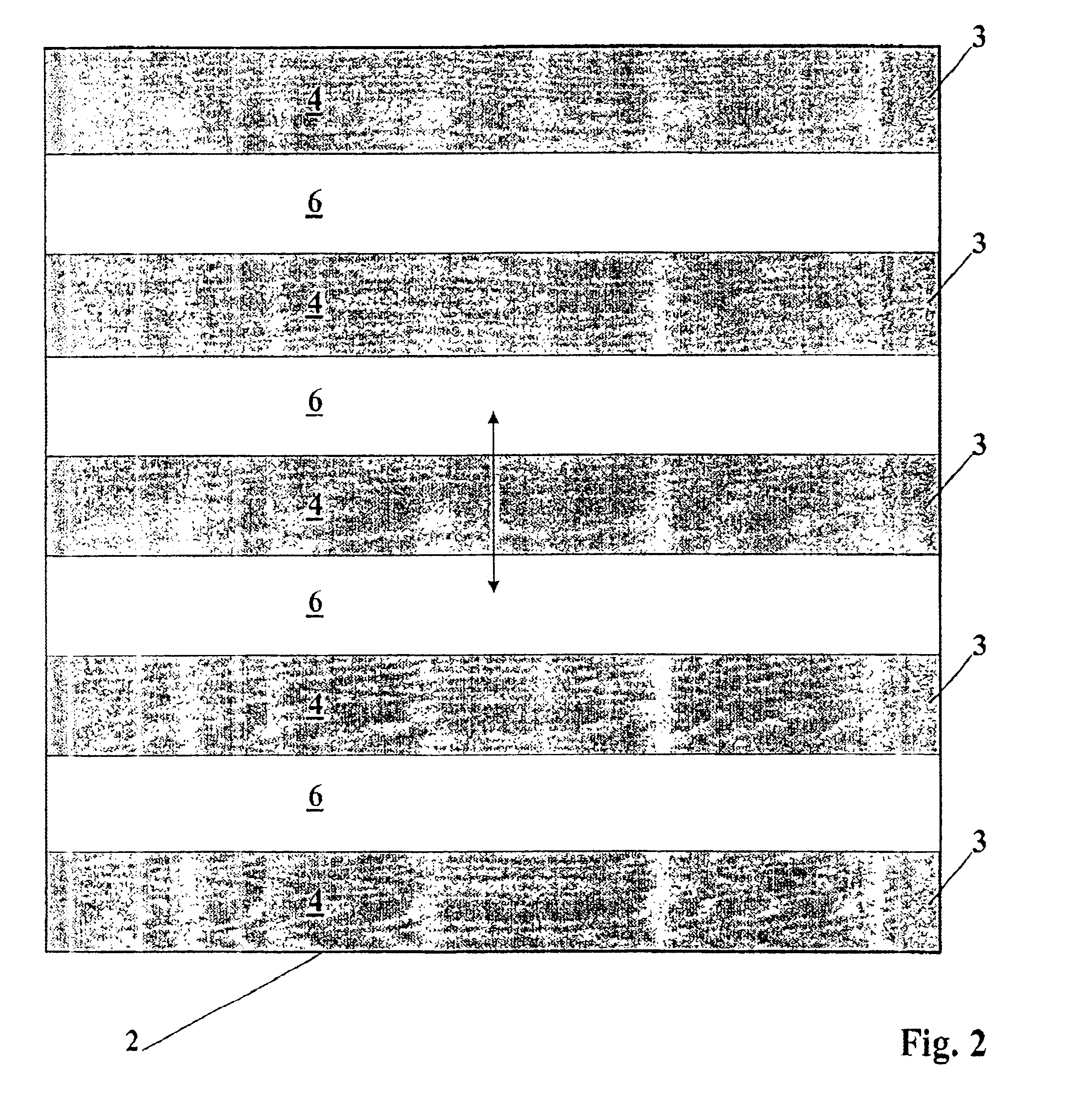Recombinator for eliminating hydrogen from accident atmospheres
a hydrogen and accident atmosphere technology, applied in the field of recombinator for eliminating hydrogen from accident atmospheres, can solve the problems of large amounts of hydrogen, serious dynamic compressive stress on the containment walls, and atmospheric air in the containment (containers) will give rise to flammable mixtures
- Summary
- Abstract
- Description
- Claims
- Application Information
AI Technical Summary
Benefits of technology
Problems solved by technology
Method used
Image
Examples
Embodiment Construction
Embodiments relating to coatings for the surface of flat basic bodies will be described below. The arrows indicate the preferred directions in which the stream flows over the basic body. Double arrows indicate that both directions of flow are possible. However, in the case of non-homogenous coatings, only one overflow direction, namely in the direction of greater coverage density, is provided, since the hydrogen concentration in this direction tapers due to continuing recombination.
FIG. 1 shows the surface of a plate or film 2, which is uncoated in the inlet area, with an increasing amount of catalyst material 3 in the direction of flow. In this case, a slight coverage density is initially used, since the share of hydrogen is high, and the principle of non-ignition through low reaction rates is to be observed. As the stream flows over, the catalyst amount increases in stages or continuously up to a maximal value at the outlet. A residual portion of the diluted mixture can still be d...
PUM
| Property | Measurement | Unit |
|---|---|---|
| Flow rate | aaaaa | aaaaa |
| Density | aaaaa | aaaaa |
| Width | aaaaa | aaaaa |
Abstract
Description
Claims
Application Information
 Login to View More
Login to View More - R&D
- Intellectual Property
- Life Sciences
- Materials
- Tech Scout
- Unparalleled Data Quality
- Higher Quality Content
- 60% Fewer Hallucinations
Browse by: Latest US Patents, China's latest patents, Technical Efficacy Thesaurus, Application Domain, Technology Topic, Popular Technical Reports.
© 2025 PatSnap. All rights reserved.Legal|Privacy policy|Modern Slavery Act Transparency Statement|Sitemap|About US| Contact US: help@patsnap.com



